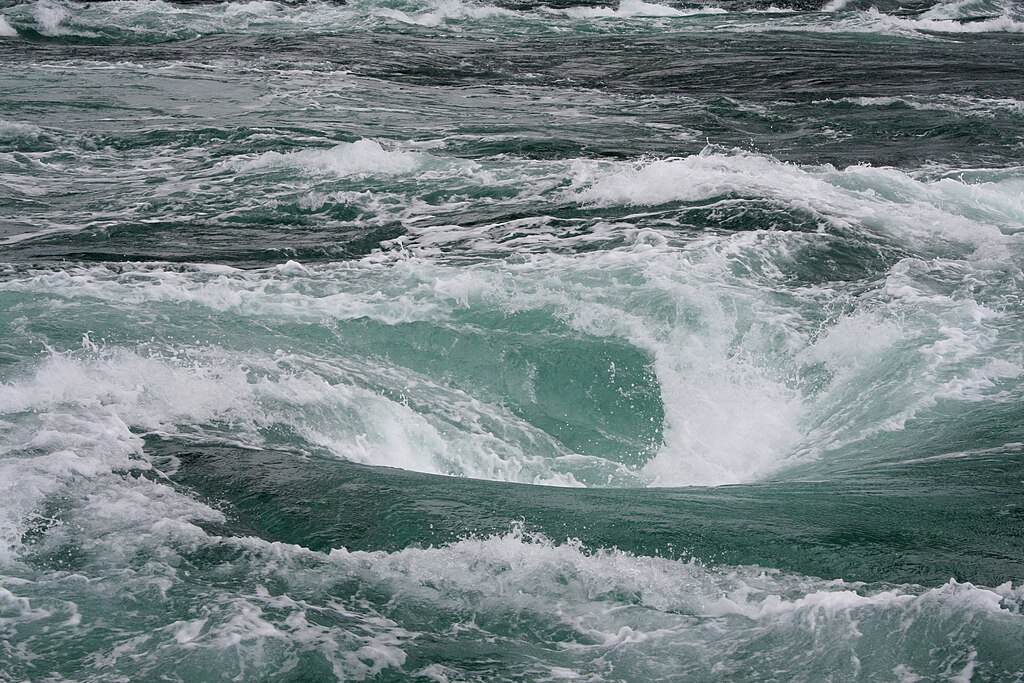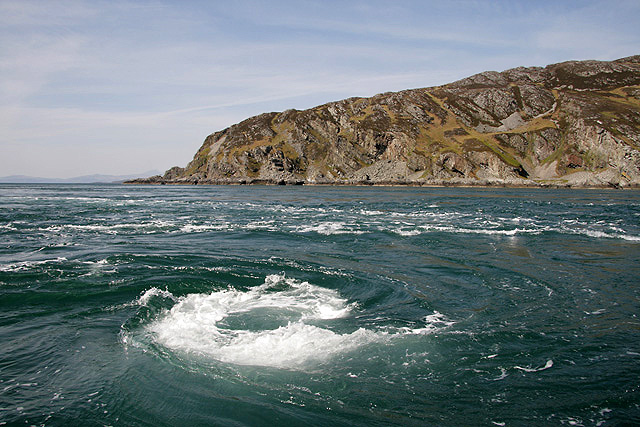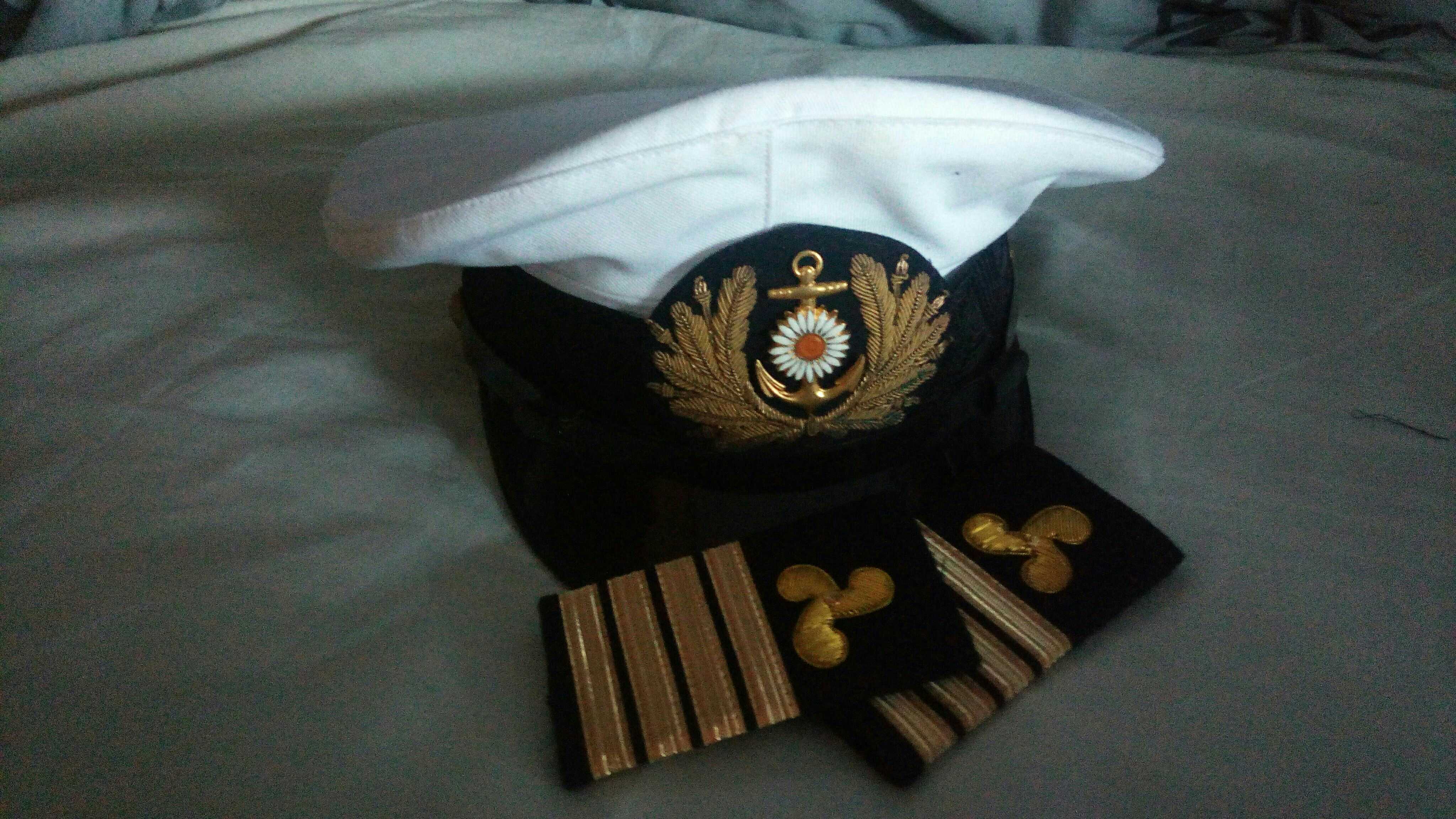Mælström
Spinning water that will suck you and your ship down to the depths.
Introduction
A Mælström, more often spelt maelstrom, but mælström looks cooler, is a fast rotating body of water which has a downwards suction component. Another name for the phenomenon is whirlpool, but those are bodies of rotating waters without a downward suction.
Mælströms are feared by sailors and swimmers alike, as they can potentioally suck a ship or a person in to the depths, to for ever disappear below the waves.

How do they work
In your sink or bathtub, small mælströms can also occur when you drain away the accumulated water. It's gravity that pulls down on the water in the sink trough the drain. And the force of rotation of the earth and/or the shape of the sink, that causes the water to start spinning.
But for a mælström in the seas, it is usually the tidal currents forcing water over through a narrow passage that creates these immense whirlpools. But it can also be the weather that pushes the water along.
The largest mælströms can reach up to 15 meters in diameter, and can spin water around as fast as 18 knots. What you might not know or expect is that the mælströms make a deep roaring sound that can be heard over a great distance around. Greatly adding to them being prevalent in local folklore and the fear for them.
But most surprising fact of all is that some whale species, especially Mink Whale love to play in those death traps! They willingly dive in, to be sucked down, try to swim against the current, try to jump out, and then disappear under water to later reappear outside the mælström, presumably having been spit out by the downdraft near the seafloor, only to swim back and dive in again.
Etymology
The world mælström, or maelstrom, comes from the Dutch word maalstroom, which is the word for the same phenomenon. Maalstroom is a contraction of the verbs malen, to grind, and stromen, to flow. Via the Scandinavian languages it came into English with several possible spelling option.
Coire Bhreacain
Coire Bhreacain in Ghaelic, Corryvreckan in English, Which means as much as "Cauldron of the Speckled Sea"

This Cauldron is a famous mælström on the Scottish west coast. It is formed by a strong tidal flow, rushing trough the Strait of Corryvreckan, a narrow passage between the two islands Jura and Scarba. The shape of the seafloor, creates one of the biggest mælström's in the world.
The flood tide creates waves of up to nine meters high. and the water can reach speeds of 10 knots. The deep roaring sound the water makes can be heard from 9 nautical miles away.
The Royal Navy originally classified the Coire Bhreacain as 'not navigationalble' but later reduced the classification to only 'extremely dangerous'.
For a Scottish documentary, a mannequin with sensors was once thrown into the cauldron, it was found to be pulled down to a depth of 262 meters, and was dragged along the ocean floor for a great distance.






These sound a lot scarier in real life than the mythological ones!
Thanks, I do take that as a compliment